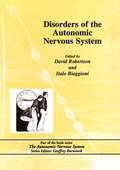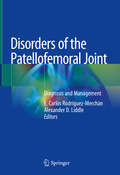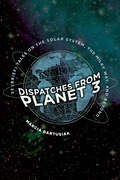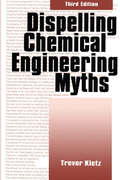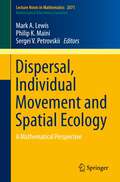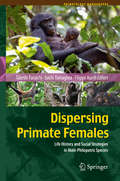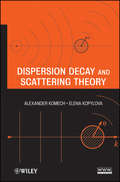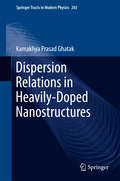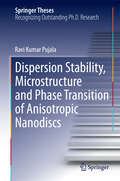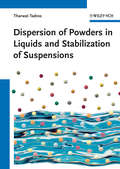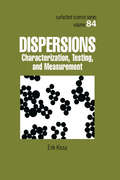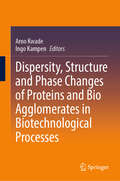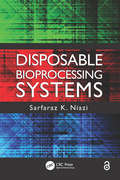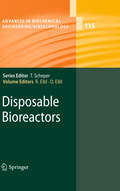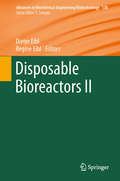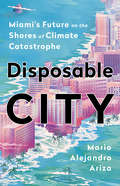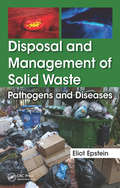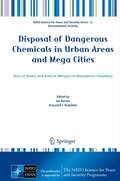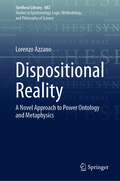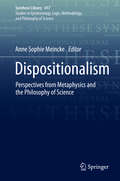- Table View
- List View
Disorders of the Autonomic Nervous System
by Alan S. RobertsonDisorders of the Autonomic Nervous System, the fifth volume in The Autonomic Nervous System book series, is a description of the disorders which give rise to autonomic failure and orthostatic hypotension. Each chapter is prepared by an international authority in the diagnosis and treatment of that disorder. The language and terminology are clear enough to promote understanding of the clinical problems and the underlying concepts of basic science. The most recent data, especially that derived from molecular biology, is included in the discussions of relevant diseases. Hence, the volume provides an unparalleled source of information about this area of medicine and will be helpful not just to practising clinicians but also to basic scientists researching in the field who need to familiarize themselves with the clinical problems.
Disorders of the Patellofemoral Joint: Diagnosis and Management
by E. Carlos Rodríguez-Merchán Alexander D. LiddleThis state-of-the-art book provides a comprehensive overview of the most common patellofemoral joint problems. Utilizing the latest evidence, it guides readers through prevention, diagnosis and treatment for both adult and paediatric patients. After discussing clinical examination and diagnosis, it explores topics such as acute and recurrent dislocation of the patella, cartilage defects of the joint, patellofemoral instability and patellofemoral osteoarthritis. The book also features a chapter on conservative strategies, including physical medicine and rehabilitation. Research is moving quickly in this field, and as such there is a growing need for consensus documents: written by leading experts, this comprehensive book is a valuable resource for orthopaedic surgeons, knee specialists and sports medicine ones, and is also of great interest to physiatrists, physical therapists and all healthcare workers involved in the care of these patients.
Dispatches from Planet 3: 32 (Brief) Tales on the Solar System, the Milky Way, and Beyond
by Marcia BartusiakAn award-winning science writer presents a captivating collection of cosmological essays for the armchair astronomerThe galaxy, the multiverse, and the history of astronomy are explored in this engaging compilation of cosmological tales by multiple-award-winning science writer Marcia Bartusiak. In thirty-two concise and engrossing essays, the author provides a deeper understanding of the nature of the universe and those who strive to uncover its mysteries.Bartusiak shares the back stories for many momentous astronomical discoveries, including the contributions of such pioneers as Beatrice Tinsley, with her groundbreaking research in galactic evolution, and Jocelyn Bell Burnell, the scientist who first discovered radio pulsars. An endlessly fascinating collection that you can dip into in any order, these pieces will transport you to ancient Mars, when water flowed freely across its surface; to the collision of two black holes, a cosmological event that released fifty times more energy than was radiating from every star in the universe; and to the beginning of time itself.
Dispatches from the Vaccine Wars: Fighting for Human Freedom During the Great Reset (Children’s Health Defense)
by Christopher A. ShawEnter the trenches of the bloodiest battles you've never heard of: the Vaccine Wars. Professor Christopher A Shaw discovered, after a deep-dive literature search on aluminum impacts on humans and animals, that aluminum hydroxide, an adjuvant in the anthrax vaccine, had a significantly negative impact on motor functions and reflexes of patients in the literature. After that finding, he did what scientists are supposed to do and kept following the leads. However, organizations like WHO dismissed him immediately. Those powerful organizations either knew what he knew, that aluminum vaccine adjuvants were harmful, or they simply didn&’t care. In either case, two possible reasons for the lack of response became clear to Shaw and his colleagues: dogma and money. The first had served to convince most of the world&’s medical professionals that Shaw had to be wrong because, after all, &“the science was settled.&” And, behind much of this was the naked fact of how much money vaccines brought in to cover the pharmaceutical industry&’s profit margin. The combination of those two have the finger prints of various Big Pharma companies smudged all over the question of vaccine safety, which included the demonization of both scientists and lay scholars who raised even the tamest questions about safety and the push for vaccine mandates around the world. After these events, Shaw decided to dig deeper.Dispatches from the Vaccine Wars is a comprehensive look at the origin of vaccination and the oversight of vaccines by various regulatory bodies in the United States and in Canada. The book provides not only the official view on vaccines safety and efficacy, but also provides a critical analysis on which such views are based. Aluminum and other compounds that may contribute to autism spectrum disorder are discussed at length. Professor Shaw also analyzes the corporate influences driving vaccine uptake worldwide and provides an in depth look at the push for mandatory vaccination. Dispatches from the Vaccine Wars evaluates the extent to which vaccinology has become a cult religion driving attempts to suppress divergent scientific opinions. Finally, the book delves into the COVID-19 pandemic and what it means for the future of us all.
Dispelling chemical industry myths (Chemical Engineering Ser.)
by Trevor A. KletzThis book covers myths about technology, management, toxicology, and the environment. It helps all who work in the chemical industry and all chemical engineers, including teachers and students to avoid accidents and wrong decisions and use resources more effectively.
Dispencing with the Truth: The Victims, the Drug Companies, and the Dramatic Story Behind the Battle Over Fen-Phen
by Alicia MundyIn 1996, a terrible epidemic began killing young American women. Some died quickly, literally dropping in their steps. Others took more time, from a few months to a few years. Those who weren't killed suffered damage to their lungs and hearts, much of it permanent and reparable only with major surgery. Doctors suspected what the killer was. So did the Food and Drug Administration. The culprits were the two most popular diet drugs in the United States, Pondimin, one-half of the popular drug combination Fen-Phen, and Redux, a stronger version of Pondimin. They were also two of the most profitable drugs on the market, and both were produced and sold by a powerful pharmaceutical company, Wyeth-Ayerst, a division of American Home Products. Dispensing the Truth is the gripping story of who really knew about the drugs, the ways they kept this information from the public, doctors, and FDA, and the massive legal battles that ensued as victims and their attorneys searched for the truth behind the debacle. It tells the story of a healthy young woman, Mary Linnen, who took the drugs for only twenty-three days to lose weight before her wedding, and then died in the arms of her fiance a few months later. Hers was the first wrongful-death suit filed and would become the most important single suit the company would ever face. Alicia Mundy provides a shocking and thoroughly riveting narrative. It is a stark look at the consequences of greed and a cautionary tale for the future.
Dispersal, Individual Movement and Spatial Ecology
by Philip K. Maini Mark A. Lewis Sergei V. PetrovskiiDispersal of plants and animals is one of the most fascinating subjects in ecology. It has long been recognized as an important factor affecting ecosystem dynamics. Dispersal is apparently a phenomenon of biological origin; however, because of its complexity, it cannot be studied comprehensively by biological methods alone. Deeper insights into dispersal properties and implications require interdisciplinary approaches involving biologists, ecologists and mathematicians. The purpose of this book is to provide a forum for researches with different backgrounds and expertise and to ensure further advances in the study of dispersal and spatial ecology. This book is unique in its attempt to give an overview of dispersal studies across different spatial scales, such as the scale of individual movement, the population scale and the scale of communities and ecosystems. It is written by top-level experts in the field of dispersal modeling and covers a wide range of problems ranging from the identification of Levy walks in animal movement to the implications of dispersal on an evolutionary timescale.
Dispersing Primate Females
by Takeshi Furuichi Juichi Yamagiwa Filippo AureliWhy do females in male-philopatric species seem to show larger variation in their life history strategies than males in female-philopatric species? Why did females in human societies come to show enormous variation in the patterns of marriage, residence and mating activities? To tackle these important questions, this book presents the latest knowledge about the dispersing females in male-philopatric non-human primates and in human societies. The non-human primates that are covered include muriquis, spider monkeys, woolly monkeys, gorillas, chimpanzees, bonobos and some species of colobine monkeys. In these non-human primate species females typically leave their natal group before sexual maturation and start reproduction in other groups into which they immigrate. However, there is a large variation as some females may breed in their natal group with some risks of inbreeding with their male relatives and some females may associate with males of multiple groups at the same time after leaving their natal group. Such variation seems to provide better strategies for reproduction depending on local circumstances. Although knowledge about female dispersal patterns and life history is indispensable for understanding the dynamic structure of primate societies, it is still not known how females behave after leaving their natal groups, how many groups they visit before finally settling down and which kinds of groups they choose to immigrate into, due to the large variation and flexibility and the difficulty of tracking females after natal dispersal. To encourage further progress in this important field, this volume provides new insights on evolution of female dispersal by describing factors influencing variations in the dispersal pattern across primates and a hypothesis for the formation of human families from the perspectives of female life history. This book is recommended reading for researchers and students in primatology, anthropology, animal behavior and evolution and for anyone interested in primate societies and human evolution.
Dispersion Decay and Scattering Theory
by Alexander Komech Elena KopylovaA simplified, yet rigorous treatment of scattering theory methods and their applicationsDispersion Decay and Scattering Theory provides thorough, easy-to-understand guidance on the application of scattering theory methods to modern problems in mathematics, quantum physics, and mathematical physics. Introducing spectral methods with applications to dispersion time-decay and scattering theory, this book presents, for the first time, the Agmon-Jensen-Kato spectral theory for the Schr?dinger equation, extending the theory to the Klein-Gordon equation. The dispersion decay plays a crucial role in the modern application to asymptotic stability of solitons of nonlinear Schr?dinger and Klein-Gordon equations.The authors clearly explain the fundamental concepts and formulas of the Schr?dinger operators, discuss the basic properties of the Schr?dinger equation, and offer in-depth coverage of Agmon-Jensen-Kato theory of the dispersion decay in the weighted Sobolev norms. The book also details the application of dispersion decay to scattering and spectral theories, the scattering cross section, and the weighted energy decay for 3D Klein-Gordon and wave equations. Complete streamlined proofs for key areas of the Agmon-Jensen-Kato approach, such as the high-energy decay of the resolvent and the limiting absorption principle are also included.Dispersion Decay and Scattering Theory is a suitable book for courses on scattering theory, partial differential equations, and functional analysis at the graduate level. The book also serves as an excellent resource for researchers, professionals, and academics in the fields of mathematics, mathematical physics, and quantum physics who would like to better understand scattering theory and partial differential equations and gain problem-solving skills in diverse areas, from high-energy physics to wave propagation and hydrodynamics.
Dispersion Forces I
by Stefan Yoshi BuhmannDispersion forces acting on both atoms and bodies play a key role in modern nanotechnology. As demonstrated in this book, macroscopic quantum electrodynamics provides a powerful method for understanding and quantifying dispersion forces in a vast range of realistic scenarios. The basic physical concepts and theoretical steps allow for the derivation of outlined general expressions for dispersion forces. As illustrated by a number of examples, these expressions can easily be used to study forces between objects of various shapes and materials, including effects like material absorption, nontrivial magnetic properties and dynamical forces asssociated with excited systems.
Dispersion Forces II
by Stefan BuhmannIn this book, a modern unified theory of dispersion forces on atoms and bodies is presented which covers a broad range of different aspects and scenarios. Macroscopic quantum electrodynamics is applied within the context of dispersion forces. In contrast to the normal-mode quantum electrodynamics traditionally used to study dispersion forces, the new approach allows to consider realistic material properties including absorption and is flexible enough to be applied to a broad range of geometries. Thus general properties of dispersion forces like their non-additivity and the relation between microscopic and macroscopic dispersion forces are discussed. It is demonstrated how the general results can be used to obtain dispersion forces on atoms in the presence of bodies of various shapes and materials. In particular, nontrivial magnetic properties of the bodies, bodies of irregular shapes, the role of material absorption, and dynamical forces for excited atoms are discussed. This volume 2 deals especially with quantum electrodynamics, dispersion forces, Casimir forces, asymptotic power laws, quantum friction and universal scaling laws. The book gives both the specialist and those new to the field a thorough overview over recent results in the context of dispersion forces. It provides a toolbox for studying dispersion forces in various contexts.
Dispersion Relations in Heavily-Doped Nanostructures
by Kamakhya Prasad GhatakThis book presents the dispersion relation in heavily doped nano-structures. The materials considered are III-V, II-VI, IV-VI, GaP, Ge, Platinum Antimonide, stressed, GaSb, Te, II-V, HgTe/CdTe superlattices and Bismuth Telluride semiconductors. The dispersion relation is discussed under magnetic quantization and on the basis of carrier energy spectra. The influences of magnetic field, magneto inversion, and magneto nipi structures on nano-structures is analyzed. The band structure of optoelectronic materials changes with photo-excitation in a fundamental way according to newly formulated electron dispersion laws. They control the quantum effect in optoelectronic devices in the presence of light. The measurement of band gaps in optoelectronic materials in the presence of external photo-excitation is displayed. The influences of magnetic quantization, crossed electric and quantizing fields, intense electric fields on the on the dispersion relation in heavily doped semiconductors and super-lattices are also discussed. This book contains 200 open research problems which form the integral part of the text and are useful for graduate students and researchers. The book is written for post graduate students, researchers and engineers.
Dispersion Stability, Microstructure and Phase Transition of Anisotropic Nanodiscs
by Ravi Kumar PujalaThis thesis explores the dispersion stability, microstructure and phase transitions involved in the nanoclay system. It describes the recently discovered formation of colloidal gels via two routes: the first is through phase separation and second is by equilibrium gelation and includes the first reported experimental observation of a system with high aspect ratio nanodiscs. The phase behavior of anisotropic nanodiscs of different aspect ratio in their individual and mixed states in aqueous and hydrophobic media is investigated. Distinct phase separation, equilibrium fluid and equilibrium gel phases are observed in nanoclay dispersions with extensive aging. The work then explores solution behavior, gelation kinetics, aging dynamics and temperature-induced ordering in the individual and mixed states of these discotic colloids. Anisotropic ordering dynamics induced by a water-air interface, waiting time and temperature in these dispersions were studied in great detail along with aggregation behavior of nanoplatelets in hydrophobic environment of alcohol solutions.
Dispersion of Powders in Liquids and Stabilization of Suspensions
by Tharwat F. TadrosTeaching the fundamental knowledge required for successful dispersion of powders in a liquid, this book covers a host of topics -- from recent advances to industrial applications.In 15 chapters it supports formulation chemists in preparing a suspension in a more rational way, by applying the principles of colloid and interface science, while at the same time enabling the research scientist to discover new methods for preparing stable suspensions.Essential reading for those working in the pharmaceutical, cosmetic, food, paint, ceramic and agricultural industries.
Dispersions: Characterization, Testing, and Measurement (Surfactant Science Ser. #84)
by Erik KissaExplaining principles essential for the interpretation of data and understanding the real meaning of the result, this work describes carious methods and techniques used to characterize dispersions and measure their physical and chemical properties. It describes a variety of dispersions containing particles ranging from submicron sizes to aggregates and from hard particles to polymer latices.
Dispersity, Structure and Phase Changes of Proteins and Bio Agglomerates in Biotechnological Processes
by Arno Kwade Ingo KampenThis book serves as a comprehensive summary of the priority program SPP 1934, which focused on understanding the dispersity, structure, and phase changes of proteins and bio-agglomerates in biotechnological processes. Through contributions from various research groups, the program explored how sensitive proteins and bio-agglomerates are affected by the process environment during fermentation, downstream processing, and formulation. It investigated these effects across three size scales: microscale, encompassing single proteins, clusters, crystals, and virus-like particles; mesoscale, focusing on cells and cell clusters; and macroscale, examining overall process dynamics. The main objective was to enhance biotechnological process chains by elucidating the mechanical, thermal, and chemical stresses that impact protein and bio-agglomerate structures. By gaining insights into these stressors, the program aimed to enable precise control measures to mitigate denaturation and unfavorable growth of proteins and cells. This compilation seeks to contribute to the optimization of biotechnological processes, facilitating advancements in various industries.
Disposable Bioprocessing Systems
by Sarfaraz K. NiaziWritten by a researcher with experience designing, establishing, and validating biological manufacturing facilities worldwide, this is the first comprehensive introduction to disposable systems for biological drug manufacturing. It reviews the current state of the industry; tackles questions about safety, costs, regulations, and waste disposal; and guides readers to choose disposable components that meet their needs. This practical manual covers disposable containers, mixing systems, bioreactors, connectors and transfers, controls and sensors, downstream processing systems, filling and finishing systems, and filters. The author also shares his predictions for the future, calling disposable bioprocessing technology a "game changer."
Disposable Bioreactors II
by Regine Eibl Dieter EiblDynamic Single-Use Bioreactors Used in Modern Liter- and m3- Scale Biotechnological Processes: Engineering Characteristics and Scaling Up, by Christian Löffelholz, Stephan C. Kaiser, Matthias Kraume, Regine Eibl , Dieter Eibl. Orbitally Shaken Single-Use Bioreactors, by Wolf Klöckner, Sylvia Diederichs, Jochen Büchs. Therapeutic Human Cells: Manufacture for Cell Therapy/Regenerative Medicine by Christian van den Bos, Robert Keefe, Carmen Schirmaier, Michael McCaman. Fast Single-Use VLP Vaccine Productions Based on Insect Cells and the Baculovirus Expression Vector System: Influenza as Case Study by Regine Eibl, Nina Steiger, Sabine Wellnitz, Tiago Vicente, Corinne John, Dieter Eibl. Microbial High Cell Density Fermentations in a Stirred Single-Use Bioreactor by Thomas Dreher, Bart Walcarius, Ute Husemann, Franziska Klingenberg, Christian Zahnow, Thorsten Adams, Davy de Wilde, Peter Casteels, Gerhard Greller. Quorus Bioreactor: A New Perfusion-Based Technology for Microbial Cultivation by Sheena J. Fraser, Christian Endres. Cultivation of Marine Microorganisms in Single-Use Systems by Friederike Hillig, Maciej Pilarek, Stefan Junne, Peter Neubauer. Flexible Biomanufacturing Processes that Address the Needs of the Future by Bernhard Diel, Christian Manzke, Thorsten Peuker. An Approach to Quality and Security of Supply for Single-Use Bioreactors by Magali Barbaroux, Susanne Gerighausen, Heiko Hackel. A Risk Analysis for Production Processes with Disposable Bioreactors by Tobias Merseburger, Ina Pahl, Daniel Müller, Markus Tanner.
Disposable City: Miami's Future on the Shores of Climate Catastrophe
by Mario Alejandro ArizaA deeply-reported personal investigation by a Miami journalist into the present and future effects of climate change in the Magic City-a watery harbinger for coastal cities worldwide.Miami, Florida, is likely to be entirely underwater by the end of this century. Residents are already starting to see the effects of sea level rise today. From sunny day flooding caused by higher tides to a sewer system on the brink of total collapse, the city undeniably lives in a climate changed world. In Disposable City, Miami resident Mario Alejandro Ariza shows us not only what climate change looks like on the ground today, but also what Miami will look like 100 years from now, and how that future has been shaped by the city's racist past and present. As politicians continue to kick the can down the road and Miami becomes increasingly unlivable, real estate vultures and wealthy residents will be able to get out or move to higher ground, but the most vulnerable communities, disproportionately composed of people of color, will face flood damage, rising housing costs, dangerously higher temperatures, and stronger hurricanes that they can't afford to escape. Miami may be on the front lines of climate change, but the battle it's fighting today is coming for the rest of the U.S.--and the rest of the world--far sooner than we could have imagined even a decade ago. Disposable City is a thoughtful portrait of both a vibrant city with a unique culture and the social, economic, and psychic costs of climate change that call us to act before it's too late.
Disposal and Management of Solid Waste: Pathogens and Diseases
by Eliot EpsteinDisposal and Management of Solid Waste: Pathogens and Diseases takes a closer look at pathogens that are found in solid wastes and the diseases that they produce. While comparing the differences between developed and developing countries, this book provides an understanding of the risks and exposure of pathogens in solid wastes, addresses pathogens
Disposal of Dangerous Chemicals in Urban Areas and Mega Cities
by Ian Barnes Krzysztof J. RudzińskiOxides and acids of nitrogen play an important role in regulating atmospheric radical levels, in particular, that of the OH radical the main initiator of the degradation of chemicals in the atmosphere. A comprehensive overview on the methods used to measure nitrogen oxides and acids in the troposphere is given and difficulties and artefacts associated with the use of the techniques for measurements in urban and mega city environments is illustrated. State-of-the-art methods for the measurement of OH and HO2 radicals are reviewed and recently recognised difficulties, in particular with the measurement of HO2 radicals, are highlighted. Other contributions to the book cover our present understanding of the gas, aqueous and particulate/aerosol phase atmospheric degradation chemistry of volatile organic compounds (VOCs) under NOx conditions typical of rural, urban and mega city environments. Examples of measurements of NOx and VOCs in the atmospheres of these environments are given, in particular for the megacities Cairo and Beijing, in conjunction with modelling studies which attempt to simulate the field observations using state-of-the art knowledge on the chemistry of the VOCs and radical levels.
Disposal of Surplus Plutonium at the Waste Isolation Pilot Plant: Interim Report
by Engineering Medicine National Academies of SciencesDisposal of Surplus Plutonium at the Waste Isolation Pilot Plant: Interim Report evaluates the general viability of the U.S. Department of Energy’s National Nuclear Security Administration’s (DOE-NNSA’s) conceptual plans for disposing of 34 metric tons (MT) of surplus plutonium in the Waste Isolation Pilot Plant (WIPP), a deep geologic repository near Carlsbad, New Mexico. This report evaluates DOE-NNSA’s plans to ship, receive, and emplace surplus plutonium in WIPP and its understanding of the impacts of these plans on WIPP and WIPP-bound waste streams. This report, the first of two to be issued during this study, provides a preliminary assessment of the general viability of DOE-NNSA’s conceptual plans, focusing on some of the barriers to their implementation.
Dispositional Reality: A Novel Approach to Power Ontology and Metaphysics (Synthese Library #482)
by Lorenzo AzzanoDispositionalism, perhaps the most popular variant of non-Humean metaphysics, submits that dispositions, powers, or capacities, are part of the furniture of the world. In this book I advance an original approach to dispositionalism revolving around the notion of Dispositional Reality; the novelty lies in the fact that the account, unlike most alternatives on the market, does not require the reification of objects, facts, properties, nor their dispositional essences – and is in fact compatible with a far more deflationary approach to dispositions, while still being true to the non-Humean spirit of the proposal. This power metaphysics without powers allows one to dispel several puzzles in recent literature, or recast them under a new light. Albeit with its own peculiarities, this proposal constitutes a variant of explanatory dispositionalism, according to which realism about dispositions ought not to be understood as an ontological inflation, but as an explanatory inversion within thenomic and modal family. Some of these explanations are hereby attempted, and a study of various types of non-causal explanation will be provided.
Dispositionalism: Perspectives from Metaphysics and the Philosophy of Science (Synthese Library #417)
by Anne Sophie MeinckeAccording to dispositional realism, or dispositionalism, the entities inhabiting our world possess irreducibly dispositional properties – often called ‘powers’ – by means of which they are sources of change. Dispositionalism has become increasingly popular among metaphysicians in the last three decades as it offers a realist account of causation and provides novel avenues for understanding modality, laws of nature, agency, free will and other key concepts in metaphysics. At the same time, it is receiving growing interest among philosophers of science. This reflects the substantial role scientific findings play in arguments for dispositionalism which, as a metaphysics of science, aims to unveil the very foundations of science. The present collection of essays brings together both strands of interest. It elucidates the ontological profile of dispositionalism by exploring its ontological commitments, and it discusses these from the perspective of the philosophy of science. The essays are written by both proponents of dispositionalism and sceptics so as to initiate an open-minded, constructive dialogue.
